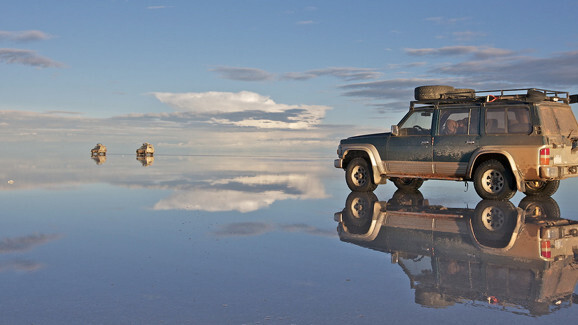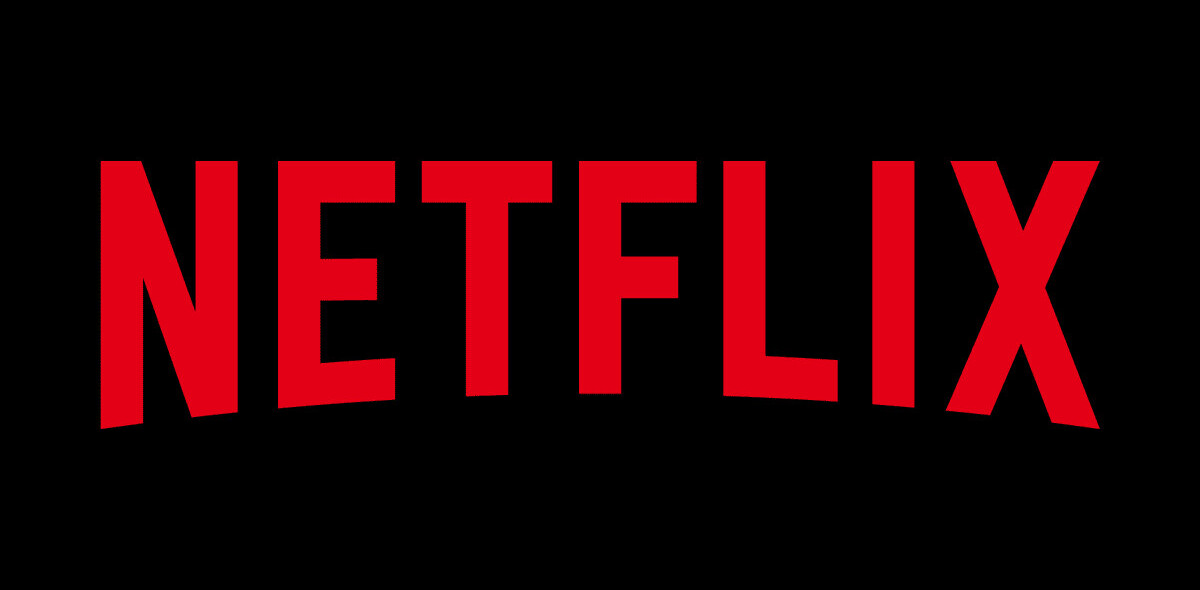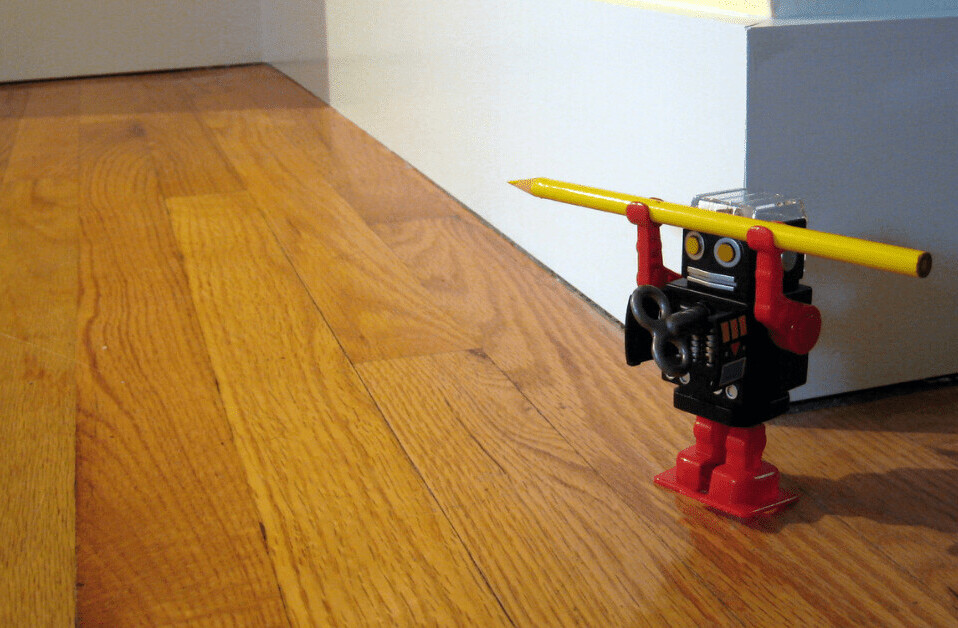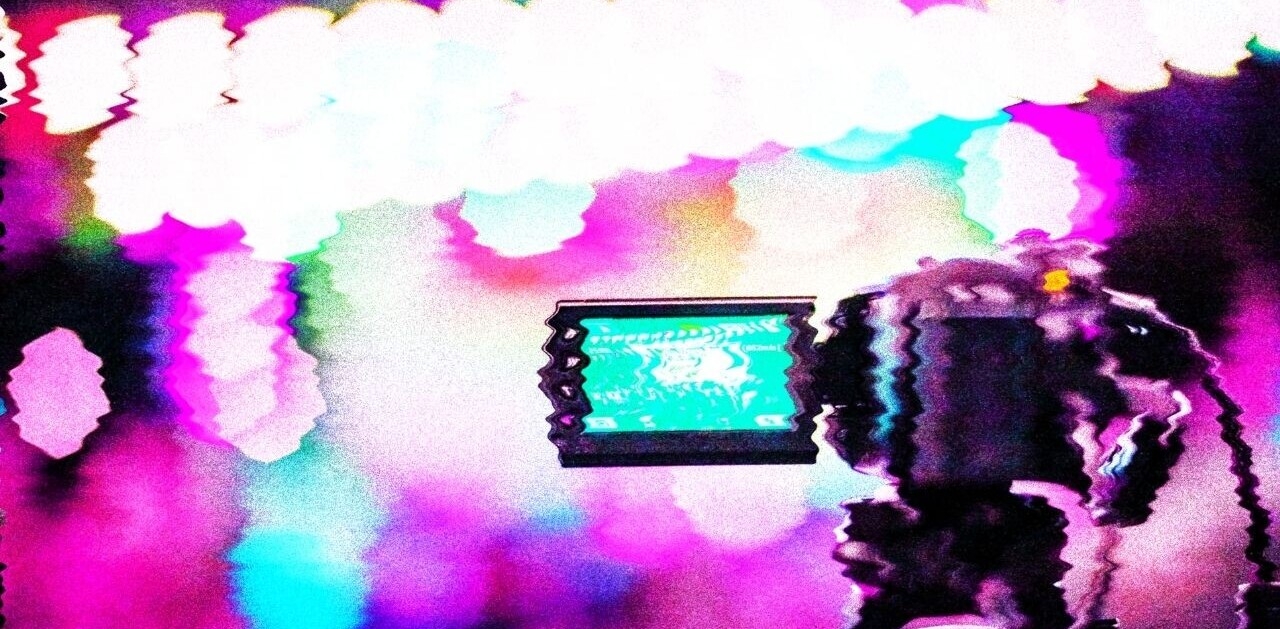
When observing their creations from the comfort of our homes, wildlife photographers seem almost like a different species — ethereally fixated on a faraway natural world — perhaps a little aloof, eschewing human company in favor of sprawling vistas and living beings who do not need a model release to appear in a photograph.
 Despite his peripatetic life as a landscape and wildlife photographer, Josh Anon mixes in plenty of human face time as a teacher, writer, contractor, and now, the CEO of a video development startup, Visioneer Studios. After 10 years as a cinematographer and software developer at Pixar Animation Studios — as part of the team working on The Incredibles, Ratatouille, Cars and Toy Story 3 — and incidentally creating a number of iOS apps including the popular FlipBook — his last gig was as a senior product manager at Lytro before striking out on his own.
Despite his peripatetic life as a landscape and wildlife photographer, Josh Anon mixes in plenty of human face time as a teacher, writer, contractor, and now, the CEO of a video development startup, Visioneer Studios. After 10 years as a cinematographer and software developer at Pixar Animation Studios — as part of the team working on The Incredibles, Ratatouille, Cars and Toy Story 3 — and incidentally creating a number of iOS apps including the popular FlipBook — his last gig was as a senior product manager at Lytro before striking out on his own.
With Anon, the left and right sides of the brain seem naturally aligned — almost intertwined — so perhaps it’s no surprise that he derives energy and optimism from the ebb and flow of the temporal world. His genuine enthusiasm about teaching and writing is regularly balanced by sliding off the grid to the planet’s remote regions. I caught up with Josh Anon, who carved out some time from his busy startup schedule, to find out how he puts these disparate parts of his life together and keeps the wheels moving.
You’re already a photographer. Why did you want to write in addition to all the visual stuff?
It wasn’t like I had this big urge to go and write, it was more that I had an opportunity to work on an Aperture book and I had taught a fair amount. In the dedication I actually said a special thanks to my high school English teacher who thought hell would freeze over before I would write a book. But it ended up being fun, and I ended up doing a few more and collaborating with my mom, and it’s funny because along the way it switched from being an opportunity into gee, this is actually fun.
Do writing and photography naturally go together?
From the artistic side, both are really about conveying information. One’s the written form, the other is in the visual form and it’s nice to have the two things together. From the pragmatic standpoint the photography market has undergone a big shift. I used to make a fair amount just selling images.
Even with stock sales, that’s dropped off a lot whereas teaching and writing and income from that area has picked up. So the pragmatic bit drives our lives but then turns out to be something we like and then drives the things forward.
What makes your vision gravitate toward animals and huge vistas? Why does that capture your imagination?
I started out doing a fair amount of macro photography and it was from that bend toward flowers and small animals, combined with enjoying travel and getting out into the world. There ’s a lot of stuff in that space that most people never get a chance to see and it’s alot of fun going places and seeing really crazy stuff and seeing beautiful sunrises and sunsets. It’s a lot of work.
Sitting in one place for hours and waiting for the right light or not sleeping because you’re watching for polar bears 24-7. It’s difficult and not for everyone. But it’s going to these remote places and taking the best parts back to people to make the earth a slightly smaller place.
How does it work that you can go out shooting one day and come back with 25 good shots?
It’s a mix of planning and experience — and I take a lot of shots. Early on it was just shooting a lot and figuring out what works and what doesn’t work.
It was a lot harder in the days of slide film where every shot has a cost and there was a disconnect between when you took the photo and when you saw the results. Unless you had a lot of money to get everything developed, you had a lot of incentive to learn quickly. Over time, you develop a sense of what’s going to work and what won’t and the conditions you like. Is it worth even taking the camera out?
I sometimes joke that I’m a lazy photographer. I’d go somewhere and there would be 40 to 50 photographers and I’ll not even get out of the car. Part of me says this isn’t going to be so special, but even if it is, there’s going to be 40 to 50 people with the same shot. I want to go to places where most people don’t go and get cool and unique shots there. Because of that, I do more research and more thinking about where I’m going to and is this going to be productive.
A new place can be overwhelming.
It’s hard to go someplace for the first time and be expected to go shoot right now. It may be a place where the light is better in the evening, but you’re there in the morning. Or you might need a long lens but you only have a standard zoom. Or you have all your stuff with you but it’s a location where you have to hike and it’s a couple of miles to get an interesting shot and you’re not going to be happy about things.
That’s really what separates a professional mindset. You know what you’re going to do after walking in. Whereas most people are just awestruck and love everything and don’t know where to start. I think it’s a lot harder to go somewhere with no expectation of what you’re going to shoot.
How do you know after the fact what you’re going to like and throw away?
When I get home I upload things to my website pretty quickly because people are asking to see what I’ve shot. But I will go back and look at them again when I’ve had a little emotional distance from something. So there may be shots where I was disappointed because I was hoping to get one thing and didn’t get it and got something else. Or I might have said, this is a three star image, but then later when I look at it again I say this is a really great shot and bump it up higher.
I usually start with a quick edit where I say, did I get the technical parts right? Is it properly exposed or is it a fixable exposure? So there’s the first pass right there. If I’m shooting animals, then I consider the pose, did I get all the animal I wanted in the frame? I’ll throw away a fair amount there.
There’s also shots that just stand out right away. I’ll like the composition or the pose — there’s some elements that grab my attention. I aim to get as much as possible right in camera just because it means I have less to do later on, but I know how to use all the digital tools at my disposal to make the image even better.
When I’m editing, there are really shots that I’m excited about. I’ll spend some time making tweaks and seeing can I go from a nine to a 10 quickly. Then I’ll be really happy with it and it will get uploaded to my website.
Your mother Ellen Anon is a famous photographer. What’s it like to have another photographer in the family who shoots roughly the same things you do?
It’s actually pretty good on the whole. We joke sometimes that photography is a competitive sport. It was also really nice when I was younger and still in high school, we had a whole fridge full of slide film in our garage and how many people can say they had that?
Even now, we’ll travel places and shoot together and that’s fun. Sometimes I’ll be someplace and she’ll look over and ask, “what is it that you’re shooting?,” and she’ll come over and look through my view finder and go, “move over.”
Other times we’ll be talking about a scene and talking about what we’d look for in a shoot or places to go, so it’s nice to have the team element and the collaboration.
So you’ve grown up doing this.
Sometimes I joke that I taught her everything she knows. I had an instamatic 110 and point and shoots. I always had different cameras; it’s just when does it become serious and when do you start doing more with it? And it was when I was 13. The first shot I sold for $500 was when I was 13. That’s a better sale than I’ve had in the past couple of months.
Looking at your mother’s images and yours there’s a similarity of view — not the same pictures but sometimes similar pictures. How does that happen?
There’s a couple of factors. There’s a genetic component to it. There’s no scientific data backing this up, but if you put us somewhere we end up with something similar. It could be something environmental in that we’ve looked at a lot of the same photographers’ work. Art Wolf, George Lepp, Galen Rowell, and we admire their work and of course their vision is going to influence us as well.
Sometimes it’s because we’re in the same location and we kind of have the same approach about what’s interesting and how do we bring that out, and we both end up fixating on the same thing. And other times I’d be shooting something and she’ll say let me look at your viewfinder. But sometimes we wind up with stuff that’s totally different.
Since we’re from small town Pennsylvania, instead of going back there and sitting around not doing much for a few days, we’ll go to some remote spot in Canada and photograph at this location.
That doesn’t sound competitive.
There are the funny moments. We were shooting an aurora in Iceland and had some of the best that we’ve ever seen and before we’re even back in the car my mom says, “I’m entering this in BBC Wildlife Photographer of the Year.” I’m OK, grumble, “fine you can enter that one there.”
So she enters her shot and it’s a runner up or second place and she ends up getting this great trip to London and her image up in the Natural History Museum and practically dinner with the Queen, and it’s all great.
So, I look and say great, fine. I’m entering into these contests, so right now my image is hanging in the California Academy of Sciences and I had a very lovely drive downtown to their nightlife exhibit where they featured it. It’s like whose going to stake the claim to the BBC first?
On page two: Working at Pixar, and the differences between phtography and cinematography
What did you do at Pixar and how did that shape what you’re doing now?
I started off in the software engineering group and I was helping to write a tool to digitize the early production process. Back then, people would draw storyboards by hand and they would actually pin them up on boards and pitch. The editor would sit in the meeting and take notes. The editorial assistant would receive a stack of images to scan in, and it was a process that would take days.
My team helped turn this into a digital tool where we took something that was a couple of days worth of work down to ‘push a button and 10 minutes later it’s there.’ I was working closely with production and they asked if I was interested in rotation, and I was, and they sent me to the camera department. But because of a clerical error I was put in the pile of people who were in production. They were re-doing Ratatouille so production was sending me to Cars.
I was fortunate because I could deal with both worlds — production and software — the technical and the artistic so I moved around a little. I wound up working on render optimization on Cars and crowd simulation on Wall-E, but primarily I was a cinematographer. It was fun helping to come up with better tools to help the department get its job done.
But animation and cinematography are so different than photography; they seem to come from a different part of the brain.
Cinematography is a lot harder in some ways. You have to have motion and you have to think about multiple shots connecting, but it’s also easier in some ways because you have more time and more shots to tell a visual story.
When I travel, I appreciate still photography more because as heavy as the gear is, it’s still lighter than video equipment. You also have to be aware of what’s the cut and how will it be assembled without necessarily knowing what someone’s going to use it for.
Photos and videos are different too. What made you move from a concentration on still photos to moving pictures for your startup?
It’s not moving from one to the other; I enjoy doing both for different purposes. When I shoot stills it’s because I want to go and find something amazing in the works; some moment of beauty and capture that and share it with people. When I work on video projects I gravitate toward fiction, not documentary. So it’s let’s invent a world and come up with compelling characters and this big expansive story.
They’re both visual and they’re both forms of storytelling, but movies are the most expensive stories ever told — to borrow a phrase from a friend.
Do you shoot video yourself?
Sometimes, but not a lot. There are so many people who do it and do it well and I want to try and add value where I can. Especially going from Pixar to Lytro and being a product manager there, I enjoy the producer role and I enjoy pulling things together, and I can contribute more effectively there.
I’m pretty good at seeing the big picture of things but you also have to understand detail. Since I came up through the ranks and handled different parts of production, I can understand the problems that different departments have and help them come together in the project.
Speaking of Lytro, where does Light Field photography fall into the form as a whole?
My big takeaway is that I’m really impressed with the amount of innovation that’s shown up in photography. There’s the work that Lytro’s doing and the stuff that DJI is doing with the Fantom. Did you see Eric Cheng’s video of the drone footage of the volcano in Iceland? That’s really cool stuff.
Innovation in cameras coming to Silicon Valley, and not just made in Japan or Germany, is pretty exciting too. Lytro and Pelican and some others are driving that. The market trend that I appreciate are smaller cameras and smaller lenses but higher quality optics, so I’m looking forward to how that continues to improve in the future.
If I could replace my DLSR and lens kit with something that’s even half the weight and half the size I’d be ecstatic. It’s a really exciting time to be a photographer.
So you don’t think a mirrorless interchangeable lens cameras will cut it because of the sensor size, or what?
I think people fixate too much on sensor size. Give me three reasons why you need a full frame sensor. One thing you hear is wide angle lenses, but there are really wide angle lenses for smaller sensors that give you the same field of view. The one that’s maybe valid is low light performance. A bigger sensor means bigger pixels which is better for low light. But most people don’t think of that.
I think what those cameras are doing is really interesting and that space is improving a lot. I definitely have my eye on it. It also depends on the kind of thing I’m shooting. Some of these cameras aren’t as rugged, the autofocus isn’t quite as reliable. If I’m shooting wildlife, having an electronic viewfinder is still too slow compared to an optical viewfinder, or the batteries don’t last as long as you need them to. So if I’m going on a trip and I’m tight for camera space I’m going to take the thing that I know is going to work even if it’s heavier and bigger.
When I went to the North Pole there was no question. I’m taking my Canon camera and lens lineup even though it fills my whole bag because I know those are going to work in every situation I throw at them.
Tell us about your new video development company.
Making movies is a crazy process. Movies are visual, but the first time you see it visually is after you’ve spent all of your money on production. And if it’s not working — either the story isn’t there and the test audience doesn’t react well to it — you have to spend a lot of money getting everyone back together and try to reshoot and fix what you can.
The way Hollywood works right now is that they make movies that are guaranteed to get butts in seats even if the story doesn’t turn out as well as they hoped. So you’re seeing a lot of big budget blockbusters and sequels and franchise films like Transformers 4 because it has an entertaining aspect to it.
On the indie side, making a movie is hard, and if you’re going to do the work, telling your story, getting recognition, and hopefully winning an award often drives you more than financial success. So you end up with compelling content but probably not something you take the whole family to see.
With animation, there’s a different development process where you create a high fidelity, low-cost prototype of the movie, test it, and iterate on the story. So we thought, let’s adapt this to live action, and we think it will let us make some great lower-budget, story-driven movies that are also financially successful.
How do all those years at Pixar inform your video development company now?
So my partner and I considered how at Pixar we developed this translation from script to screen using ideas from how animated movies are developed. My partner and I were both there and that’s how we learned a lot of this.
At Pixar, filmmaking is viewed as a team sport. It takes a lot of people to make this movie. We are taking that idea and making it the core of what we’re starting.
Good ideas come from anywhere. Let’s have a few smart people get together and come up with something. Let’s accept that we’re going to be wrong at first and that it’s not going to be perfect. We want to make our mistakes early and improve as fast as we can and as cheaply as we can. Those are definitely ideas from Pixar, and you’ll read about them in Creativity Inc. We saw that all the time and it’s just different than the way the rest of Hollywood functions.
Any final thoughts you want to share?
I think its good for people to get out and have adventures, not just with their camera but just generally. In the startup world and the tech world you see a lot of people who are devoted to their jobs and work all the time and never leave their desks. I admire the dedication, but I’m a great believer in balance.
If you get out with the camera, great. But it’s okay to put the camera down and just enjoy the moment.
Get the TNW newsletter
Get the most important tech news in your inbox each week.






















